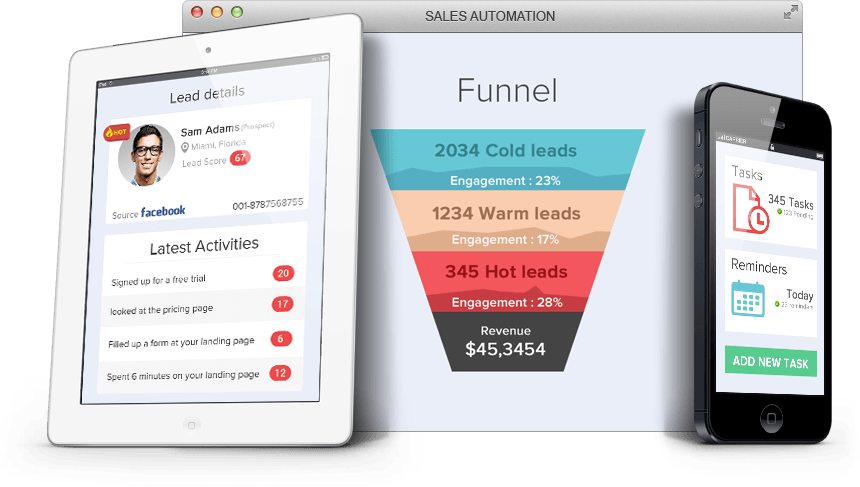Understanding how your prospects react to your sales and marketing messages goes a long way in building a relationship with them. One of the ways you can press forward is by tracking their action and behavior for example – tracking their web activities, email activities or phone activities.
Knowing what interests them help your marketing team to tailor relevant messages and your sales team to have a context in their followups.
What is email tracking?
Email is the most effective of all communication channels and probably the most abused one as well. Every day you get spammy emails and why not – it is so easy to do buy lists and blast a campaign. But does it work?
Not much, because they are not relevant. The key to a successful email campaign is the relevance and relevance comes with understanding. Email tracker helps you with that. It allows you to see what happens when you send out an email – who sees it, how they react to it, and so on.
Perhaps you are new to email marketing and can’t see why tracking is important, or you may be a veteran of multiple email campaigns and have never looked at any figures other than your number of subscribers but once you start tracking the emails you will understand that the gut feeling is not always right and you will be in for a few surprises.
Headline tracking
The first thing that any recipient will see of your email is the subject line or headline. A good headline will grab the attention and build interest, while a poor headline will result in your message immediately being sent to the trash or spam.
![]()
Clearly, your goal is to get as many people to open your message as possible, so to begin with you’ll create headlines that you think will have mass appeal.
However, discovering what kind of headline works for your market is important. Some markets will respond well to “You won’t believe how to make this work!” while others will respond to “15 hacks to build a better [product]”. You can’t always predict how this will go, as some markets will respond in surprising fashions.
By tracking, if an email is opened, you can build an idea of what kind of headline gets a result. After you’ve tried a few different styles it will become easy to spot a pattern, and you’ll know which strategy works best for your market.
Click tracking
Once your email has been opened, a whole new area is exposed – the content of your email. Within the content, you will have at least one call to action and a link to click. Tracking the number of times this link is clicked, especially in relationship to the opening rate, will allow you to evaluate both the content and the strength of the call to action.
![]()
Low click percentages clearly indicate that something within the content needs to be improved – perhaps it doesn’t accurately match with what your email audience requires, or perhaps the call to action is too weak.
You may find you have too many or too few links to click – either can dissuade an audience from engaging with the content of your email.
Time tracking
Different days and different times of day can affect the open rate and click rate of your emails. If you aim to send a message to a person who is always the busy first thing on a Monday morning, it’s best to avoid sending that message on Monday morning altogether. But you might not always know what the best time is!
![]()
By tracking when emails are opened and when links are followed, you’ll quickly be able to establish the best time of day/week to send your messages out. There may be several sweet spots, and they may not always be when you expect them to be.
Device tracking
Another area where you may think you know your market is in the types of devices they use to read their email. If you believe the majority of your audience will use a desktop computer, you will likely tailor your content to be relevant to desktop users. You may even choose to design the layout of your message to be more legible on larger screens.
![]()
When tracking the kind of device your email is opened on, you may be surprised to find out the majority of your opens actually come from mobile devices – without tracking this information, you could easily be losing customers or limiting your market by focusing on the wrong type of users.
What gets measured, gets managed
Tracking everything you can about your email allows you to measure the effectiveness of every message you send. The quote, “What gets measured, gets managed” is usually attributed to Peter Drucker, although there is some debate about the original source. However, it is not important who coined the phrase – what is important is the truth it holds.
If you were to continually email your leads and provide them with content that wasn’t relevant, they wouldn’t open your message, and you’d soon be tagged as a source of spam.
Once you’ve reached spam status, virtually every message you send will end up in the spam folder, preventing you from marketing to anyone.
Knowing how often your messages are opened, when they are opened, what devices are common in your audience, and being able to figure out what kind of content your audience likes from actual reports allows you to build a better email marketing system overall.
This will help prevent you from hitting the spam folder and may even turn your marketing messages into emails that your leads look forward to receiving.





